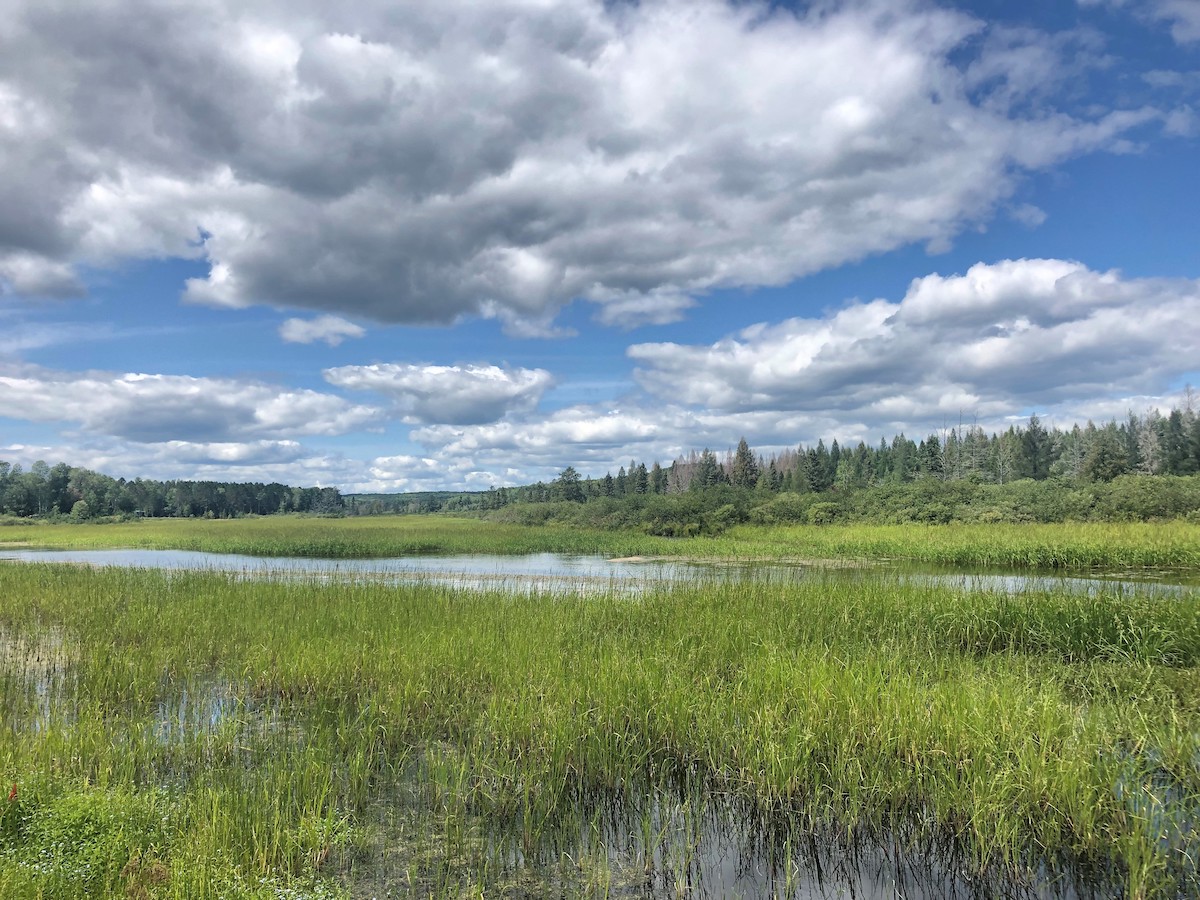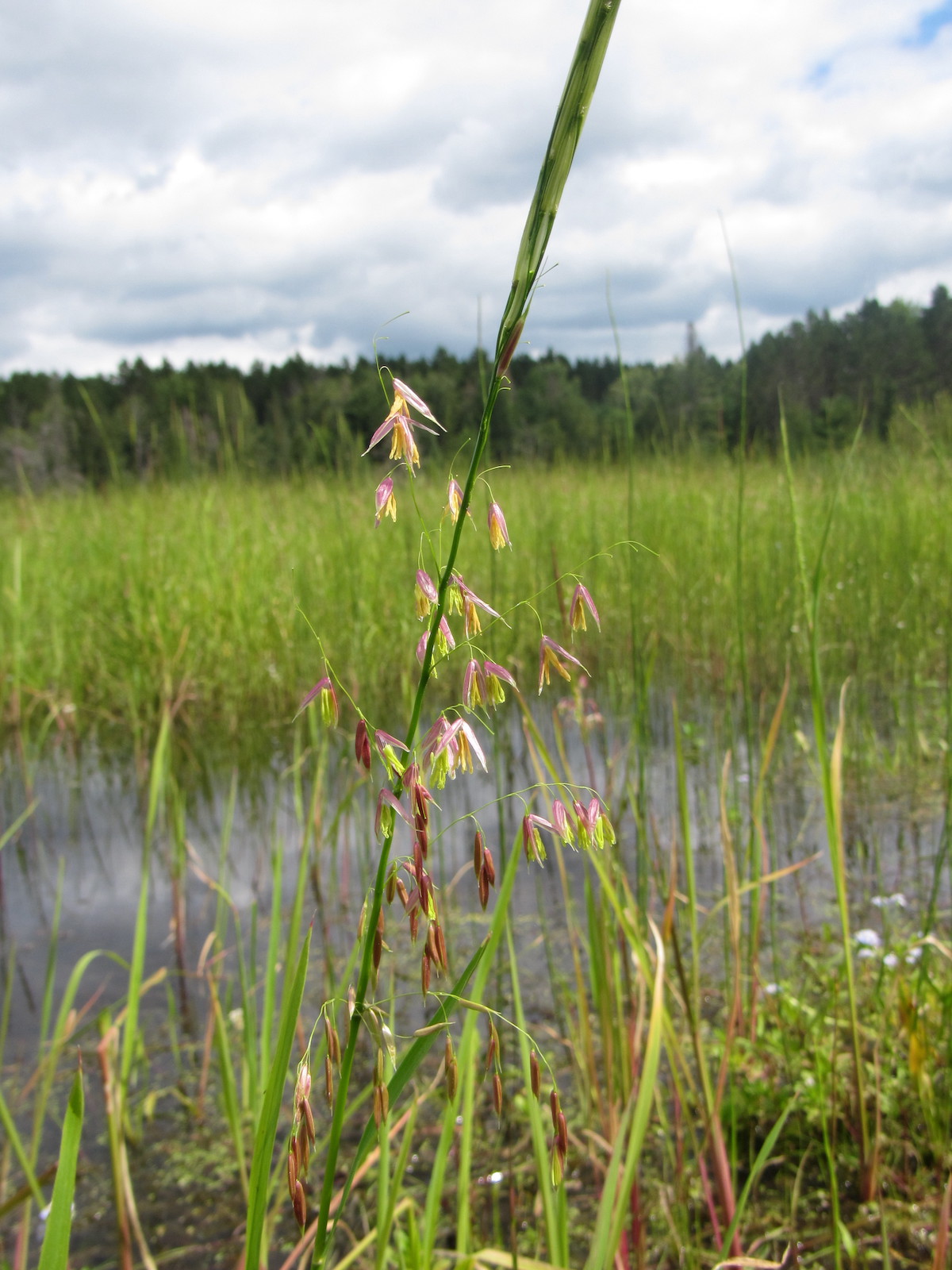
- Details
- By Elyse Wild
- Food | Agriculture
More than 1,000 years ago, the Anishinaabek were prompted by a prophecy to travel west in search of the land where food grows on water. They left what is now New Brunswick, Maine, traversing the St. Lawrence River until it opened into the Great Lakes region, where they discovered wild rice and their new home. They named the plentiful rice “manoomin,” and it became a cultural centerpiece to Anishinaabek life.
But the once-plentiful manoomin has been significantly diminished because of habitat loss and degradation tied to logging and industrial uses of Michigan’s waterways.
To help combat that situation, the Michigan Department of Environment, Great Lakes, and Energy’s Office of the Great Lakes on March 9 announced a $100,000 grant to the University of Michigan Water Center to support the creation of a collaborative wild rice stewardship plan. The call for the plan originated from the Michigan Wild Rice Initiative Team (MWRIT), which includes representatives from various state departments and each of the 12 federally recognized tribes in Michigan.
 Anishinaabek called wild rice “manoomin.” (Courtesy photo) While the tribes have long cared for wild rice and the waterways in which it grows, the grant marks the first time the state and tribes will be working together to form an official plan surrounding manoomin conservation and restoration efforts.
Anishinaabek called wild rice “manoomin.” (Courtesy photo) While the tribes have long cared for wild rice and the waterways in which it grows, the grant marks the first time the state and tribes will be working together to form an official plan surrounding manoomin conservation and restoration efforts.
“Tribes have been taking care of the water in their own communities for some time, and they have a lot of knowledge to bring to the table, but then there are issues around state jurisdiction,” said Danielle Fegan, a wildlife assessment biologist and member of the Sault Ste. Marie Tribe of Chippewa Indians and co-chair of the MWRIT.
“Through the Michigan Wild Rice Initiative and this grant, we can figure out how to protect this plant that is so important to the tribes — a plant that the state has recognized is important to tribes and the ecology of Michigan,” Fegan told Tribal Business News.
Wild rice is native to the Great Lakes and once thrived in Michigan's waterways. Along with being nutritionally dense, it provides habitat and is a primary food source for many water species.
However, growing and maintaining manoomin can be precarious: It needs to be planted in 6 inches to 3 feet of water in a low- or no-traffic area, away from animals that like to eat it, and in muck soil with stable water levels and a lack of competitor plants.
According to Manoomin: The Story of Wild Rice in Michigan by Barbara Barton, nearly 200 wild rice sites once existed in lakes, rivers and marshes across the state. Today, just 145 sites remain, and with significantly diminished acreage.
To that end, Saginaw Bay was once home to 10,000 acres of wild rice, but now has just 200 acres. Monroe Marsh once held 4,000 acres of manoomin, and St. Clair Flats had 2,000 acres, but both sites now are more than 90 percent depleted. At one point, Houghton Lake had a rice bed a mile long. It's no longer in existence.
Michigan’s prolific logging era played a significant role in destroying manoomin; logs were transported down rivers and stored in towering stacks along river beds. Floating lumber mills destroyed water quality with the unregulated mass disposal of debris, tannic acid and sawdust. Meanwhile, railroads were built through rice beds to transport logs.
Manoomin holds cultural and spiritual significance to Michigan’s tribes, and is used in prayer ceremonies and during special feasts and celebrations. Tribal communities have long led efforts to restore wild rice, and it is tribal practice to seed from whatever wild rice is harvested. While genocide and the boarding school era disrupted knowledge around ricing, tribes have established rice camps to reawaken knowledge and share traditions around harvesting, processing and reseeding.
“There are many reasons we can point to why it has declined so much, but we are very interested in restoring manoomin so our community members can be on the water with manoomin and potentially harvest it without having to leave our communities,” Fegan said.
The MWRIT began meeting in 2017 as a result of the Michigan Water Strategy, a 30-year plan to protect, manage and enhance Michigan's resources that includes goals of tribal and state collaboration for the conservation and restoration of manoomin.
The initiative’s goals include:
- establishing and maintaining collaborative partnerships among federal, tribal, state and local government organizations to elevate the recognition, protection and restoration of native wild rice;
- conducting education and outreach;
- developing and supporting appropriate harvest strategies and best practices;
- bridging gaps in current regulations and authorities;
- compiling and maintaining current and historical information; and
- developing stewardship strategies.
“We see the stewardship plan as pulling together all of the different goals of the MWRI,” said Katie Lambeth, the Department of Environment, Great Lakes, and Energy environmental justice and tribal liaison, and co-chair of MWRIT. “It will be helpful in elevating the importance across many different areas.”
MWRIT will be working on the stewardship plan in collaboration with the U-M Water Center, which focuses on collaborative, user-driven research to develop solutions for water resource challenges.
“Working in wildlife, there are very few things people can agree on, but there are shared priorities, and this stewardship plan is an opportunity to identify those priorities and move forward with them for manoomin,” Fegan said. “There is a lot of excitement and interest in manoomin — it has a big focus.”
When talking about her hopes for the stewardship plan, Fegan speaks of her own tribe in Sault Ste. Marie: “If we came out of this with a planning document that we could all point to back up our future work to help us secure funding for restoration and conservation, what does that mean for back home? To me, that means our community is eating rice that our community is harvesting.”
